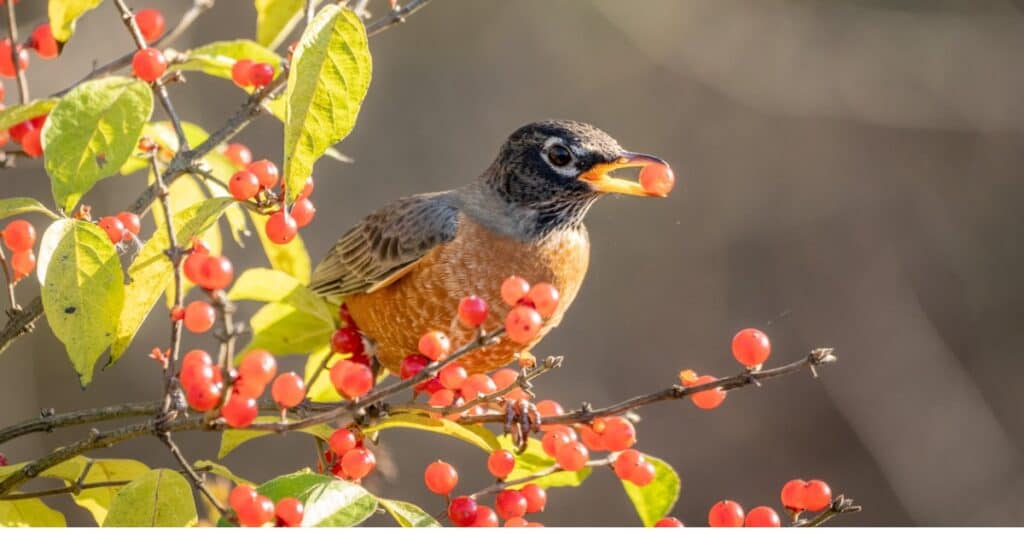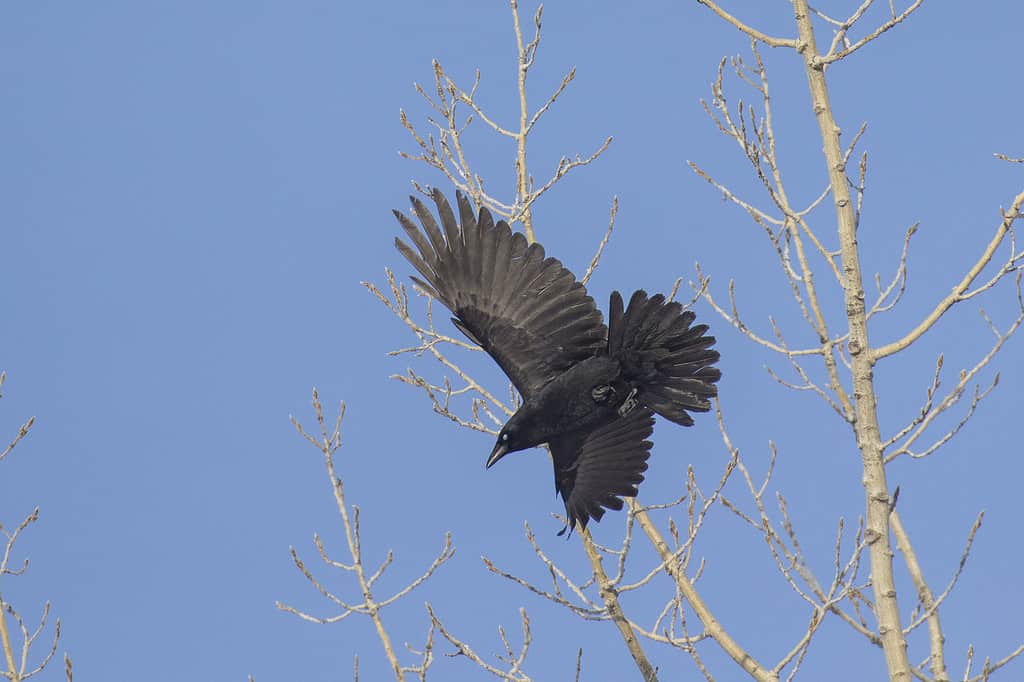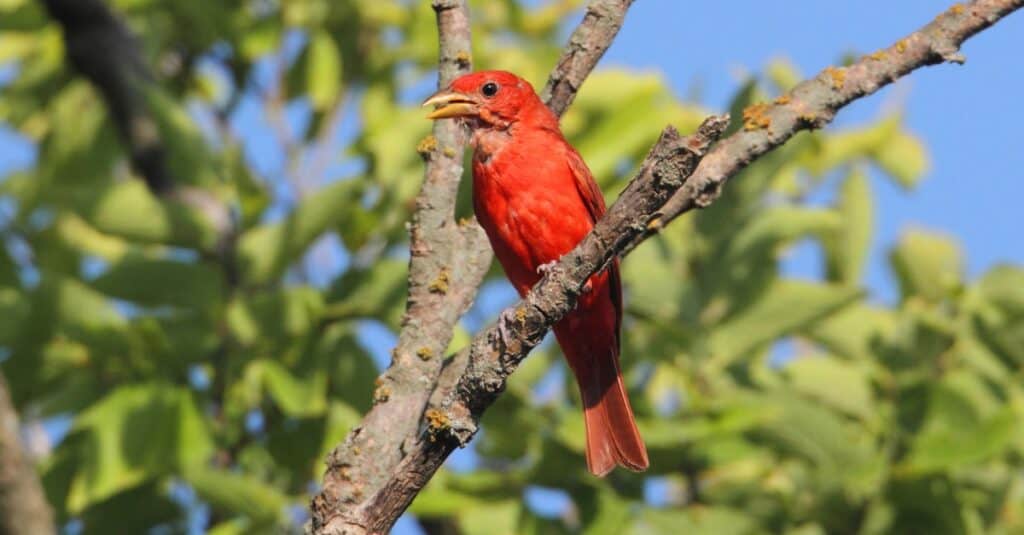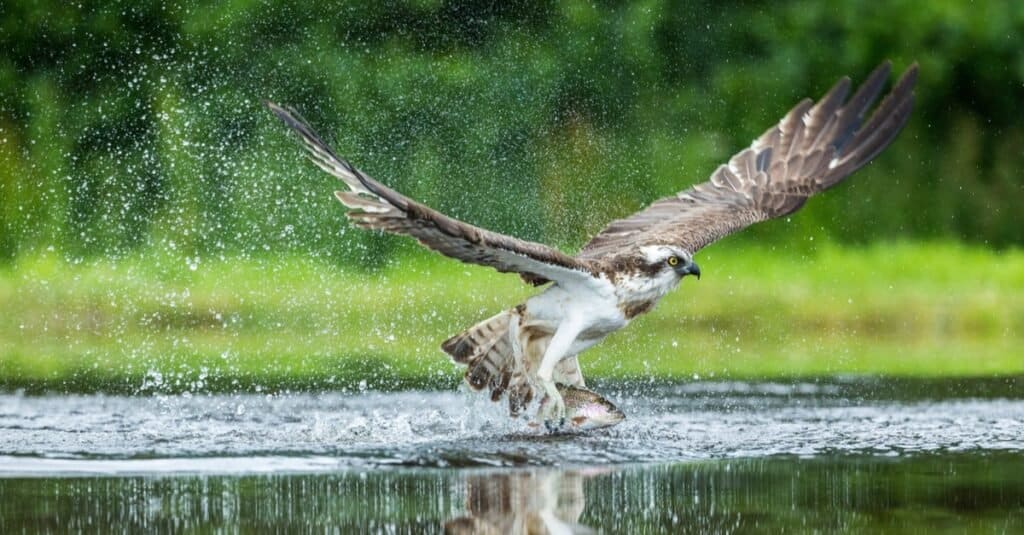Ohio is a bird watcher’s paradise. So many birds call this beautiful green state home. In Ohio, there are over 400 bird species that are either full-time residents in the state or migrate yearly. About 200 of the 400 birds breed in Ohio.
There are many spots where you can visit within Ohio to bird watch. Locals love visiting Metzger Marsh Wildlife Area to view wildlife. Wayne National Forest and Cuyahoga Valley National Park also provide some of the best habitats for birds in Ohio.
Are you ready to dive in and learn about some of the most common and beautiful birds in Ohio? Continue reading!
American Robin
One of the most stunning birds in Ohio is the American Robin. These beautiful birds are best known for their bright orange or red breasts. They are about 9 to 11 inches long and are found throughout North America. These migratory birds can be found wintering in southern Canada to central Mexico. They are so popular that they are Connecticut, Michigan, and Wisconsin’s official state birds.
American robins have white marks around their eyes, their tail, and their bellies. Female American robins are duller than males, with brown-orange breasts. These social birds are active during the day and feed on berries in small groups. About 40% of their diet though, consists of small invertebrates, while the remaining 60% are wild and cultivated fruits.
Male American robins have beautiful vocalizations. It’s a cheery sound that varies depending on the region and time of day.
Interestingly, not only do American robins sing during sunrise and sunset but also when a storm approaches or passes. If you wish to see these beautiful birds in Ohio, they mainly overwinter in the southern portions of the state. They are more commonly seen in summer.

American robins are common in Ohio and overwinter in the southern portion of the state.
©iStock.com/weaver1234
Common Starling
Another stunning bird in Ohio is the common starling. Common starlings are medium-sized passerine birds that are about 8 inches long. They are best known for their beautiful glossy black plumage with a metallic shine. Common starlings also have white and brown spots which sometimes look like tiny hearts. Their legs are pink and their bill changes colors depending on the season. Although found in Ohio, common starlings are native to Eurasia.
They were introduced to the United States in the 1800s and are now permanent residents in the state. Common starlings have beautiful vocalizations. Sometimes, they sing in groups, especially when roosting or bathing together. While common starlings are nosier during the breeding season, they also sing outside of the season. Interestingly, female common starlings also occasionally sing.

Common starlings are noisy birds.
©iStock.com/Imogen Warren
Northern Cardinal
Northern Cardinals have many names. They are also referred to as redbirds, common cardinals, red cardinals, or just cardinals. These birds are easy to spot and found throughout Ohio. Males have bright red feathers which help them attract the attention of females. Northern Cardinals are found throughout North America, including parts of Canada. It’s also found in northern Guatemala and northern Belize. These beautiful birds live in woodlands, gardens, shrublands, and wetlands.
These songbirds range in size. Male northern cardinals are slightly larger than females, but it’s hardly noticeable. Males are bright red with black masks on their faces and coral beaks. Females aren’t as bright. Instead, their feathers are fawn-colored with a slight reddish tint. While females also have a mask, it’s not as dark.
Northern cardinals are important in Ohio. They are the state’s official bird! Interestingly, these beautiful birds weren’t abundant in the state until the 1800s. It was adopted as the state’s official bird in 1933.

The official state bird of Ohio is the
northern cardinal
.
©iStock.com/Diane079F
American Crow
Next on our list is the American crow. This bird is large and stunning. It’s intelligent and lives in most of North America. American crows are about 16 to 20 inches long. Most of their length is their long tails. American crows have iridescent black feathers that glimmer in the sunlight. They weigh between 11 to 21 ounces. Sometimes, people confuse American crows for common ravens because of their similarities in color, but American crows are smaller.
American crows are omnivores. They scavenge for food and aren’t picky eaters. They also actively hunt for frogs, mice, and young rabbits. In winter when food is scarce, American crows depend on nuts, fruits, and acorns. Although not frequent, American crows have been recorded visiting bird feeders.
Experts have also observed these birds working together to steal food from other animals. For instance, one American crow will distract a bird with food by pecking it, while others swoop down and take the food.

American crows are very intelligent and have been recorded stealing food from birds and other animals.
©iStock.com/1381721614
Red-headed Woodpecker
Red-headed woodpeckers are also common in Ohio. They are found in temperate North America and breed in the open country across southern Canada and the east-central United States. Mature adults are tri-colored. They have white bellies, black backs and tails, and a bright red head and neck. Unlike other bird species, females are just as vibrant as males. Young red-headed woodpeckers look similar but have grey heads.
These beautiful birds are about 7.5 to 9.8 inches long and have wingspans almost double their length. Their wingspan can reach up to 16 inches long. Most of these birds weigh about 2.7 ounces. They are excellent fliers and mainly eat plants. Red-headed woodpeckers are one of the only bird species to store excess food. They hide excess food under tree bark and in tree cavities.
Red-headed woodpeckers are almost always found in southern Ohio. During winter, they are rarely seen. You can find these stunning and vibrant birds near forests and residential areas with large trees.

Red-headed woodpeckers are more commonly found in southern Ohio compared to northern Ohio.
©vagabond54/Shutterstock.com
Summer Tanager
The summer tanager is another vibrant red bird in Ohio. They are small to medium-sized songbirds in the Cardinalidae. Previously experts marked this bird in the Thraupidae family. Currently, two subspecies exist. P. r. cooperi is more commonly seen in Mexico as it winters in southern Mexico. The P. r. rubra, however, winters in Central and Northern South America.
These beautiful birds sing an American robin-like song. It also has a well-known agitated call. These birds are great in gardens. They consume wasps and bees. Summer tanagers fly high to catch insects midair. They consume berries, especially from the Mayan cymbopetalum plant.
Summer tanagers are common in Ohio during the breeding season but migrate during the winter. Bird watchers search for this bird near wasps and bee nests.

Summer tanagers breed in Ohio, but are never seen during winter.
©iStock.com/SteveByland
Osprey
Last but not least is the osprey. This large bird mainly lives near reservoirs and small lakes. It’s especially found in the northeast and central Ohio. These large birds are most common between March through May. They breed in the state. When they return to their breeding site, they immediately begin working on restoring their nest. Sadly, they were almost entirely extinct from Ohio during the 1960s and 1970s.
Ospreys have many nicknames, including sea hawks, river hawks, and fish hawks. They are mainly grey, white, and brown. Ospreys mainly consume fish. They are great hunters and use their sharp talons to catch fish. Apart from fish, ospreys may also hunt mice, rabbits, salamanders, snakes, frogs, and turtles

Ospreys return to Ohio annually during the breeding season. They immediately start rebuilding old nests or completely building new nests.
©LMIMAGES/Shutterstock.com
The photo featured at the top of this post is © iStock.com/PaulReevesPhotography
Thank you for reading! Have some feedback for us? Contact the AZ Animals editorial team.






